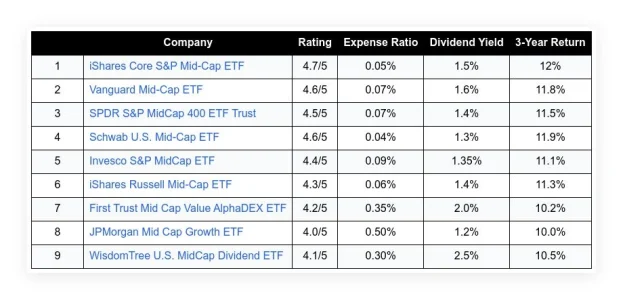Pensions have been a cornerstone of retirement in America for decades. Imagine working for the same employer for decades, then receiving a guaranteed income after retirement. This was a promise of security, a path to financial peace in your golden years. Pensions, also known as defined benefit plans, delivered on this promise.
However, those days are largely behind us now. As a result, self-directed plans like 401(k)s, IRAs, and other personal savings vehicles are replacing them as the primary means of funding retirement.
Due to this seismic shift, millions of Americans face the dilemma of securing a steady and guaranteed income stream after retirement if they don’t have a pension. In recent years, though, annuities have gained increasing prominence as potential solutions. Annuities aren’t the ideal replacement for old-school pensions, but they are becoming the most popular modern alternative to ensure predictable income.
Throughout this post, we’ll explore what has happened to the once-ubiquitous pension, explore annuities, and critically evaluate whether they realistically bridge the retirement income gap.
Table of Contents
ToggleThe Disappearing Pension: A Shifting Landscape
Once upon a time, pensions represented the quintessential American dream. Back then, staying loyal to one company for a career meant earning a comfortable, predictable income in retirement. In 1980, 60% of private-sector workers participated in defined-benefit pension plans. As of today, that number has plummeted to less than 15%. Due to escalating costs for employers and complex regulatory burdens, pensions have largely become relics in the private sector.
Although private pensions have largely disappeared, public pensions continue to be available to government workers at all levels. However, even these are not without challenges, as many public pension funds are underfunded. Even those government employees who qualify for a pension may face changes or reductions to future benefits, adding to the uncertainty.
As pensions decline, massive responsibilities are being transferred to individuals. It is now the individual’s responsibility to generate sufficient retirement income, not the employer’s. As a result of this shift, many Americans are unprepared. The Federal Reserve estimates that households between the ages of 55 and 64 have a median retirement savings account balance of about $185,000. Although this is a considerable amount of money, it isn’t likely to be enough for most people to retire comfortably.
In short, despite what most individuals need to support themselves during what could easily be 25 or more years without a regular paycheck, this figure is alarmingly low.
What’s Missing Without a Pension? The Challenge of Longevity Risk
Unlike most modern retirement plans, pensions offered a single, invaluable benefit: lifelong income guarantees. Investment accounts, such as your 401(k) and IRA, are essentially pools of money. Although you can invest your money strategically in mutual funds, exchange-traded funds (ETFs), and individual stocks, you must manage withdrawals yourself. As a result, retirement planning faces the enormous challenge of “longevity risk” — the profound risk that you will outlive your savings.
As retirees lose their pension, they face a complex financial landscape, making critical decisions about;
- How much to withdraw annually? If you take too much too soon, you might deplete your savings, and if you take too little, you might suffer unnecessarily.
- How to guard against market downturns. In retirement, when withdrawals begin, a significant market correction can devastate a portfolio.
- How to make money last as long as it does. With longer lifespans, it becomes increasingly important to extend your savings over several decades.
This is where annuities come into play. Although they are not identical to traditional pensions, they do offer lifetime income, which is exceptionally difficult to replicate through self-managed investment accounts alone.
Annuities 101: What Exactly Are They?
At its core, an annuity is a financial contract between you and an insurer. You pay a lump sum (or a series of payments) and get a stream of income in return. Think of it like buying future payments.
According to when payments begin, annuities can be divided into two broad categories;
- Immediate Annuities (Income Annuities). In most cases, you begin receiving payments within a year of purchasing these annuities. They’re often intended for retirees who need immediate income or are nearing retirement.
- Deferred Annuities. These annuities provide payments over a period of time. Payments could begin years, if not decades, down the road. Most often, they are used by individuals who are still saving for retirement and want to secure a steady income for the future.
In each of these categories, there are various types of annuities with varying features and risk characteristics:
- Fixed Annuities. This is the simplest type. Insurers promise to pay you a fixed amount each month for a specified period (e.g., 10, 15, 20 years) or the rest of your life. Similar to CDs, but with an income component, they offer predictability and principal protection.
- Variable Annuities. Similar to mutual funds, these annuities pay based on the performance of underlying investment sub-accounts. Despite their potential for higher returns, they also carry investment risk, so your payments could change.
- Indexed Annuities (Fixed Indexed Annuities). These annuities are linked to an index (like the S&P 500), but often come with a gain cap or loss protection (a floor). As a result, this provides a middle ground between the predictability of fixed annuities and the growth potential of variable annuities.
- Deferred Income Annuities (DIAs). This type of deferred annuity requires a premium payment now, but payments begin much later (for example, at 75 or 80). Due to the delayed payment schedule, payouts are generally higher when they finally start.
- Qualified Longevity Annuity Contracts (QLACs). With this type of deferred annuity, you can fund it with pre-tax retirement bucks (from a 401(k) or IRA) and wait until age 85 to begin receiving payments. By deferring payments until the required start date, a QLAC can reduce Required Minimum Distributions (RMDs).
Ultimately, these diverse annuity types serve the same purpose: to provide a predictable income stream and, in many cases, that stream continues for the remainder of your life. This feature is directly comparable to a traditional pension’s lifetime payout.
Can Annuities Truly Replace Pensions? A Balanced View
Rather than asking whether annuities are the same as pensions (they’re not), we need to ask whether they can fill the critical gap left by the disappearance of pensions. In light of this, let’s analyze their pros and cons.
The pension-like advantages of annuities.
- Guaranteed lifetime income. Among all the similarities, this is the most compelling. Almost all types of annuities, including immediate and deferred income annuities, can provide you with a secure source of income for the rest of your life. In turn, retirees are relieved of the risk of longevity.
- Simplicity and peace of mind — once set up. If you’re seeking a predictable retirement, knowing that you will receive a set amount of money every month, regardless of market volatility or economic uncertainty, can be a significant relief from financial anxiety. By providing financial security, retirees can focus more on other aspects of their retirement.
- Market downturn protection. A fixed annuity or an indexed annuity can protect you from market losses. Unlike 401(k)s, where value can be significantly eroded during bear markets, your principal or a portion of it is protected.
The key differences and considerations.
- Not employer-funded. This is the biggest distinction. Traditionally, your employer was responsible for your pension’s costs and investment risks. When you purchase an annuity, however, you’re responsible for paying premiums. For example, you might use 401(k) rollover funds, IRA assets, or other savings to purchase the contract. As a result, you have to pay the initial capital outlay.
- Complexity and fees. In contrast to fixed annuities, variable and indexed annuities can be complex. Many come with fees (such as mortality and expense charges, administrative fees, and rider costs) that can reduce your return. Before committing, read the fine print and understand all associated fees. To navigate this complexity effectively, it’s highly recommended to work with a trustworthy, fiduciary financial advisor.
- Inflation protection varies. Traditionally, pensions have had cost-of-living adjustments (COLAs) that increase benefits in line with inflation. This is not included in many basic annuities. You can often purchase inflation riders, but they usually come at an additional cost and reduce your starting payout. Over 20-30 years, the purchasing power of a fixed income can erode significantly.
- Liquidity limitations. Generally, once you commit money to an annuity, especially an immediate or deferred income annuity, it’s locked up. If you want to access your principal early, you may incur significant surrender charges. Because of this lack of liquidity, you should only annuitize money you are confident you won’t need for emergencies or unforeseen expenses in the future.
Who Should Consider an Annuity? The Ideal Candidate
For specific individuals, annuities can be a highly effective component of a retirement plan;
- Retirees without a pension. When defined benefit plans are not available, annuities provide a direct path to converting accumulated savings into predictable and reliable income.
- Longevity-focused planners. Annuities offer unparalleled protection against your primary retirement fear, outliving your assets.
- Risk-averse individuals. Annuities, especially fixed annuities, may appeal to people who prefer stability and guaranteed income over market-based investments.
- Individuals with essential expenses. Annuities are particularly well-suited to cover basic, non-discretionary living expenses, such as housing, utilities, food, and healthcare. In addition to providing enormous psychological comfort, guaranteed income can also cover these core costs.
Financial advisors often recommend an income floor strategy, which involves using annuities to cover essential expenses and investing the remaining investments for growth and discretionary spending. In this hybrid approach, security and flexibility are both provided.
How to Use Annuities Strategically in Your Retirement Plan
As part of your retirement income strategy, annuities can provide you with smart, tactical options that go beyond simply replacing a pension:
- Create a personal pension. This is the most direct application. You can purchase an immediate or deferred annuity with a calculated portion of your 401(k) or IRA savings that pays you a steady monthly income.
- Bridge the gap. An annuity can provide income during the interim period between retirement and claiming Social Security. As an example, if you want to wait until 67 before claiming Social Security (to allow your benefits to grow), you may benefit from a 5-year immediate annuity.
- Delay Social Security. There are many benefits to this strategy. Use an annuity to cover some of your living expenses in your early retirement years. You may be able to delay claiming Social Security benefits until the age of 70. For every year you delay past your full retirement age, your Social Security benefits grow by approximately 8%.
- Protect against late-life costs. Deferred annuities that begin paying payments at a very advanced age (e.g., 80 or 85), such as QLACs, can provide insurance. If you have enough money left over after retirement, you could use it to help cover possible long-term care expenses.
What to Watch Out For: Due Diligence is Key
When considering an annuity, proceed with caution and conduct thorough research. Unlike other financial products, these are complex financial instruments.
- Compare quotes. You should always compare quotes from many high-rated insurance companies. Payout rates vary considerably.
- Understand surrender charges. Be aware of surrender charges (penalties for early withdrawals) and liquidity limitations. You should be comfortable locking up that portion of your savings.
- Read the contract carefully. Annuity contracts can be complicated. Be sure to read every word carefully, and if possible, consult with a fiduciary financial advisor (one who is legally obligated to act in your best interest).
- Consider inflation protection. Consider inflation-protected options and comprehend their impact. Although they may reduce your initial payout, they can have a significant effect on your long-term purchasing power.
- Avoid “too good to be true” offers. Typically, annuities that seem overly complicated, promise unrealistic returns, or have incredibly high commissions are red flags. You should work with advisors who prioritize your needs over sales incentives.
Conclusion: Crafting Your Own Secure Retirement
In retirement planning, the disappearance of traditional employer-backed pensions marks a significant shift. As a result, individuals are forced to assume an unprecedented amount of financial responsibility in their later years. Although no single product can replicate the simplicity and employer-funded nature of old-school pensions, annuities offer a viable and increasingly relevant alternative to bridge the income gap and address longevity risks.
The truth is that they are not a magical bullet, nor are they suitable for everyone or all retirement savings. If used wisely, though, annuities can be a powerful tool in your retirement toolkit, whether to create a personal income floor to cover essential expenses or to bridge income gaps. In addition to providing predictability, they offer a lifetime income that retirees were previously unable to obtain from pensions, giving them peace of mind.
As retirement planning evolves, so should our individual strategies. When you understand the options and make thoughtful, informed choices, annuities can help you build a comfortable and secure retirement.
Image Credit: Kampus Production; Pexels

















